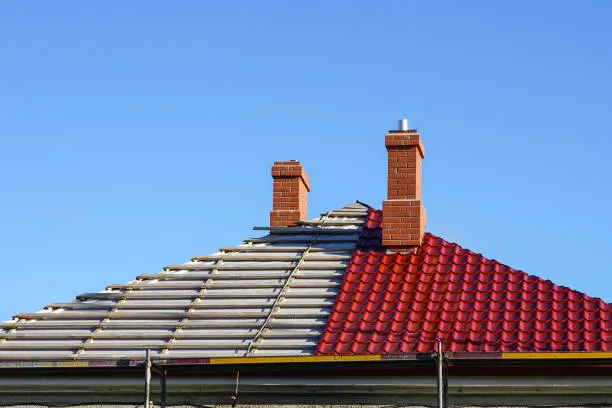Your roof is one of the most important parts of your home — it protects you from the elements, affects energy efficiency, and adds to your property’s overall appearance. When it’s time for a roof replacement or a new installation, choosing the right roofing material is a crucial decision.
Each material comes with its own advantages, drawbacks, lifespan, and cost considerations. The right choice depends on your budget, climate, and aesthetic preferences.
Here’s a detailed guide on the most popular roofing materials and their pros and cons to help you make an informed choice.
🔹 1. Asphalt Shingles
Asphalt shingles are the most common roofing material in the U.S., known for their affordability and ease of installation.
✅ Pros:
- Cost-effective and widely available.
- Easy to install and replace.
- Available in many colors and styles.
- Suitable for most climates.
⚠️ Cons:
- Shorter lifespan (15–30 years) compared to premium materials.
- Can be damaged by extreme temperature changes.
- Not environmentally friendly due to petroleum-based composition.
💰 Average Cost (2025): $5,000 – $10,000 for a standard roof
🕒 Lifespan: 20–30 years
🔹 2. Metal Roofing
Metal roofs are becoming increasingly popular for their durability, energy efficiency, and modern look.
✅ Pros:
- Extremely durable and long-lasting (up to 70 years).
- Reflects sunlight, reducing cooling costs.
- Fire-resistant and can withstand harsh weather.
- Eco-friendly — often made from recycled materials.
⚠️ Cons:
- Higher upfront cost than asphalt.
- Can be noisy during rain or hail unless properly insulated.
- May dent from heavy impact (e.g., falling branches).
💰 Average Cost (2025): $10,000 – $20,000
🕒 Lifespan: 40–70 years
🔹 3. Clay and Concrete Tiles
Clay and concrete tiles offer a classic and elegant look, often seen on Mediterranean or Spanish-style homes.
✅ Pros:
- Extremely durable and weather-resistant.
- Fireproof and energy-efficient.
- Adds a distinct architectural appeal to homes.
⚠️ Cons:
- Very heavy — requires strong roof framing.
- Expensive to install and repair.
- Can crack under impact or if walked on.
💰 Average Cost (2025): $15,000 – $30,000
🕒 Lifespan: 50–100 years
🔹 4. Wood Shingles and Shakes
Wood roofing provides a natural, rustic look that enhances the charm of certain architectural styles, such as cottages or traditional homes.
✅ Pros:
- Beautiful natural appearance.
- Offers good insulation properties.
- Can last longer with proper maintenance.
⚠️ Cons:
- High maintenance — requires regular cleaning and sealing.
- Not fire-resistant unless treated.
- Susceptible to rot, insects, and mold in humid climates.
💰 Average Cost (2025): $12,000 – $18,000
🕒 Lifespan: 25–40 years
🔹 5. Slate Roofing
Slate is one of the most durable and luxurious roofing materials available, known for its elegant and timeless look.
✅ Pros:
- Extremely durable — can last over a century.
- Natural stone with stunning aesthetic appeal.
- Fire-resistant and eco-friendly.
⚠️ Cons:
- Very expensive to install.
- Heavy — may require structural reinforcement.
- Repairs can be difficult and costly due to the material’s fragility.
💰 Average Cost (2025): $20,000 – $45,000
🕒 Lifespan: 75–100+ years
🔹 6. Synthetic Roofing (Composite or Polymer Shingles)
Synthetic roofing materials mimic natural materials like slate, tile, or wood but are made from polymer, rubber, or recycled materials.
✅ Pros:
- Lightweight and affordable alternative to natural materials.
- Resistant to cracking, fading, and impact.
- Eco-friendly options available.
- Easy to install and maintain.
⚠️ Cons:
- Relatively new, so long-term performance data is limited.
- Quality can vary depending on manufacturer.
💰 Average Cost (2025): $10,000 – $18,000
🕒 Lifespan: 40–50 years
🔹 7. Solar Roofing
Solar roofs combine protection and renewable energy generation. They’re made of solar panels or solar shingles that blend into your roof’s surface.
✅ Pros:
- Generates electricity, reducing utility bills.
- Environmentally friendly and energy-efficient.
- May qualify for tax credits and incentives.
⚠️ Cons:
- High upfront cost.
- Complex installation — requires experienced professionals.
- Performance depends on sun exposure.
💰 Average Cost (2025): $25,000 – $60,000
🕒 Lifespan: 25–40 years
🔹 How to Choose the Best Roofing Material for Your Home
When selecting your roofing material, consider the following factors:
- Budget: Choose a material that fits both your upfront and long-term costs.
- Climate: Consider heat, humidity, wind, and snowfall in your area.
- Aesthetic Appeal: Match the roofing style with your home’s architecture.
- Durability: Evaluate how long you plan to stay in your home.
- Maintenance Needs: Some materials require regular upkeep, while others are low-maintenance.
- Energy Efficiency: Reflective and insulating materials can reduce energy bills.
🔹 The Bottom Line
Your choice of roofing material impacts not only the look of your home but also its durability, efficiency, and resale value. While asphalt shingles remain the most affordable, materials like metal, slate, and tile offer greater longevity and energy efficiency.
Before making your final decision, consult a professional roofing contractor to discuss your options, budget, and local building codes. The right roof will protect your home for decades while adding beauty and value to your property.

